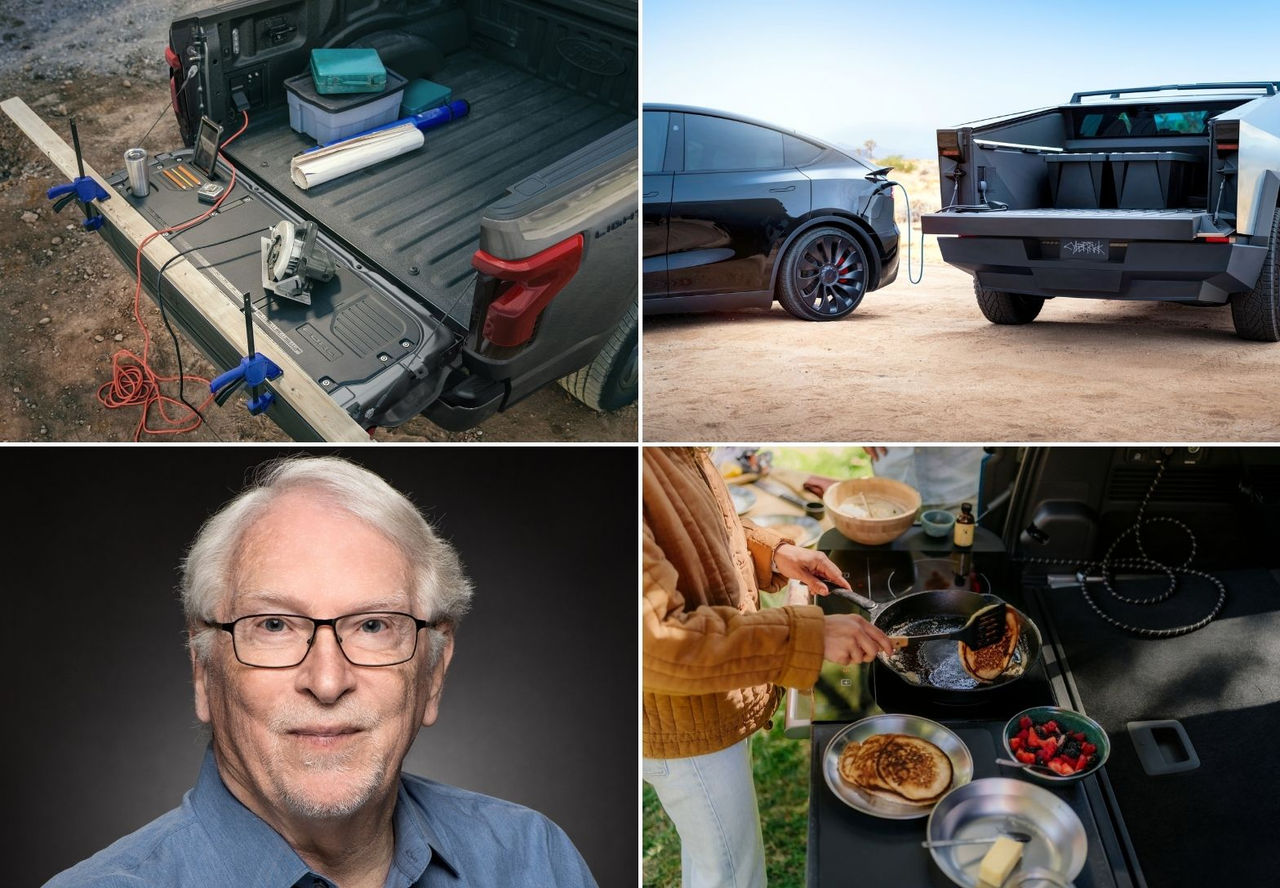©2025 Pacific Gas and Electric Company
Light ‘em Up: Your Vehicle Becomes a Power Source

Your car used to be something that only consumes power, but the electric age has flipped the switch — literally. Now your EV can be a power source for a variety of tasks — from powering your morning coffee to lighting up your entire house’s holiday lights.
Not all of the current EVs are capable of all of these feats, but bi-directional power is becoming more common. Which is as it should be because, unlike siphoning gas out of your car for another to use, reversing the flow of electricity is relatively easy.
Using an EV as a power source falls into some distinct roles. Here’s a recap of some of the most useful ones.
On the job
Exportable power has been a feature for some time on pickups but have a full electric truck (with a battery pack packing more than 100 kWh is many cases) raises the bar completely. Since its introduction, the Ford F-150 Lightning EV has been touted as a power source for work and play. Ultimately, with its big battery pack and the right kind of connection, a Lightning could power the typical house for several days. That could be a lifesaver in a power outage, as has been seen in several recent natural disasters.
Away from home
Rivian led the charge from the first introduction of its all-electric R1T pickup. The company portrayed its EV as one that could not only take you off-road or camping but provide a little extra help when out in the wild with an optional full-electric kitchen. Hyundai and Kia, among other automakers, also promote the exportable power capabilities of their EVs for small appliances or setting up a car-based office.
Helping out another EV
Almost any EV with exportable power has another trick that can come in handy. It can charge another EV. Should you get a call from a friend who has run out of juice nearby, it’s a matter of having the proper cords and connector. You can be a mobile charging station.
Giving back to the grid
V2G (for vehicle-to-grid power) is a hot topic as a variety of folks look at the potential of EVs to not only take power from the grid, but also give it back. With two-way power ability, EVs could flow power back into the grid in times when the grid’s ability to generate clean power is low, such as at night when solar power is not producing energy. Given how much time the typical vehicle spends parked, there is some logic to this approach. However, the ideal use case might be the growing number of electric school buses. Those vehicles spend a defined portion of the day parking after they’ve shuttled their charges. Expect to hear more on this subject in the near future as the growing EV market demands more power. In the meantime, feel free to use your EV as another place to plug in.
About the author
Michael Coates is an internationally recognized expert on automotive environmental issues. He publishes the Clean Fleet Report (https://cleanfleetreport.com/), writes for a variety of publications and also consults in the automotive industry.
